Healthy teeth from infancy to childhood
- Istanbul Dental Clinlc
- Healthy teeth from infancy to childhood

Healthy teeth from infancy to childhood
My baby is teething!
Your baby starts to grow his/her first milk teeth from the 6th month. Milk teeth are important in the development of babies. They play a role in chewing food, speaking, looking aesthetically beautiful and in the normal position of permanent teeth.
What should I do for healthy milk teeth?
A healthy set of milk teeth requires regular brushing, healthy eating habits and regular dental check-ups. Brushing should be done twice a day with soft and age-appropriate brushes from the time the milk teeth erupt.
should be done. The aim of brushing is to clean all white enamel surfaces. Brushing should be done after meals with circular movements from the gums into the mouth. In brushing, fluoride toothpaste suitable for the age of the child should only be used in the size of a pea grain. Teeth should be brushed before going to bed.
What is baby bottle caries and how can it be prevented?
In babies, drinking milk or fruit juice from a bottle for a long time, especially at night while falling asleep, causes widespread tooth decay. The main reason for this widespread decay is that the teeth are in contact with these liquids for a long time. Therefore, at night
It is correct to give only water to the baby throughout.
What is fluoride application?
Fluoride helps to strengthen teeth. To ensure strengthening of teeth in accordance with age The dentist can apply various fluoride treatments to the tooth surfaces in the clinic.
When should I take my child to the dentist?
The first dental check-up should be done after the child starts to sit on his/her own. Even if there is no problem in your child's mouth, taking your child to the dentist every 6 months
is required. A check-up every 6 months is important for early detection of possible problems. It also plays a role in getting the child used to the dentist and the instruments used and in preventing the fear of the dentist.
What are the consequences of bad habits?
Bad habits such as inserting the tongue between the teeth, finger sucking and nail biting disrupt the milk tooth row and affect the permanent tooth row that follows. Facial development is impaired. In the elimination of these habits, pedodontists should cooperate with pedagogues if necessary.
Is gum disease seen in children?
Gum diseases are more common in childhood during tooth eruption, mouth breathing when it is done, in bite disorders of the teeth, due to bad habits and herpes infection of the teeth. The factors causing the disease should be eliminated and the tooth Necessary treatments should be carried out by physicians.
New teeth are growing in my child's mouth.
Around the age of 6, the first permanent molars erupt into the mouth from behind the milk teeth at the back, and these teeth are often confused with milk teeth. However, they are permanent teeth and do not change. These teeth
The protection of health is of great importance for the child's ability to chew and the development of facial and jaw bones.
What is a surface sealant (fissure sealant)?
Protective materials called fissure sealants are applied to the chewing surfaces of milk or permanent molars by dentists. The fissure sealant covers the chewing surfaces and covers these indented
It cuts the contact of the protruding areas with bacteria and nutrients and prevents the formation of caries.
What is the right nutrition for dental health?
Sugary foods such as sugar and chocolate should be avoided especially between meals. In addition, sugary fruit juice and soda drinks should be restricted during snacks. Instead of sugary refined foods, natural, juicy and high-fibre foods such as fruit should be recommended. Especially if you crave something sweet between meals, products bearing the "Tooth Friendly" logo should be preferred. These products do not decay the teeth.
When is orthodontics necessary?
In both deciduous and permanent dentition periods, when there is a disorder in the tooth row, preventive orthodontic treatments, if necessary, and fixed orthodontic treatments ensure the correct development of teeth, jaw bones, proper facial appearance and chewing competence of the child.
Contact Us
You can contact us to get more detailed information about our treatments or you can send your questions to us via the contact form.
+38 220 334 087
City Kvart, Radoja Dakica Lamela 17/5 No:2 Podgorica Montenegro
Treatments
- Implant Treatment
- Personalized Implant
- Oral Diagnosis And Radiology
- T.M.J / Jaw Joint
- Cyst Operations (Surgery)
- Tooth Extraction
- Wisdom Teeth Extraction
- Smile Design
- Aesthetic Fillings (Composite)
- Laminate Veneers
- Zirconium Crowns
- Prosthetic Dentistry
- Orthodontics / Braces Treatment
- Teeth Whitening (Bleaching)
- Root Canal Treatment / Endodontics
- Gum Treatment (Periodontology)
- Pediatric Dentistry (Pedodontics)
- Orthodontics / Braces Treatment
- Prosthetic Dentistry
 English
English Türkçe
Türkçe